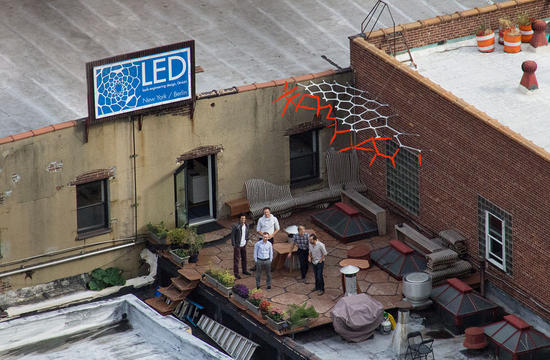The fuel of the future
Photos: TU Munich/Heddergott
Neon green lights: What looks like radioactive material from a distance surprises you when you examine it more closely and see what it really is: exotic algae. So what are algae from Papua New Guinea doing on a University campus in the German town of Ottobrunn?
Scientists believe that we could use algae as a fuel for aircraft. A crazy idea? A team from the Technical University of Munich is currently conducting joint research with the Airbus Group and the Ludwig Bölkow Campus in Ottobrunn, using a unique “super greenhouse”, to find out how much power can really be unlocked from these little muscle men from the sea.
Just five thousand of the 150,000 species of algae known to exist in the world have been characterised, and only ten of them are exploited commercially. This is all set to change. The algae pilot project uses a 1500 m² facility designed to simulate various climatic and light conditions simultaneously and in the same place. This involves the use of a RAICO curtain wall made of special glass designed to let through just the right amounts of UV radiation in particular, with targeted additional LED lighting to complete the array. Algae from all over the world – including Papua New Guinea or Almeria in southern Spain, for example – are in their element here, and can be extensively cultivated and intensively examined.
The findings are groundbreaking: the first bio-kerosene is set to be put into use as early as 2025. The question as to whether these power-packing sushi ingredients will actually get anywhere, or become a dietary supplement for national football teams, has not yet been examined.





